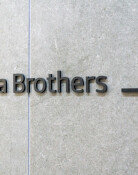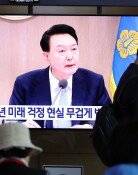Unlikely dispute between Buddhism and Confucianism
Unlikely dispute between Buddhism and Confucianism
Posted November. 18, 2015 11:30,

When the site of a seowon (memorial hall in honor of Confucians) was excavated, national treasure-grade Buddhist relics were found en masse. It happened at Dobong Seowon at the foot of Mount Dobong in Seouls Dobong district three years ago. Some 77 pieces of relics were excavated at that time. The most distinguished among the Buddhist articles was Geumgangryeong (gilt bronze bell used in Buddhist rituals). The academic community judges the bell, which is believed to date back to before the 12th Century, to be among the most valuable Buddhist relics. Conflict between Buddhism and Confucianism of modern time, however, is now unfolding anew due to those masterpieces. The Buddhist community is strongly protesting Confucian scholars move to rebuild the seowon.
According to the Seoul metropolitan government and Dobong ward office on Tuesday, Buddhist relics unearthed at the site of Dobong Seowon contain a sad history. Up until the Goryeo Dynasty, the site was home to a Buddhist temple called Yeongguk-sa, but it was dismantled and closed in the Joseon Dynasty. Later in 1573 (sixth year under King Seonjo), Dobong Seowon honoring Jo Gwang-jo (1482-1519), a famed Confucian scholar with penname Jeongam, was constructed at the site. All Buddhist relics unearthed three years ago were from an incense burner buried under the cornerstone of the seowon. The academic community interpreted the finding to be symbolizing strong pro-Confucianism, anti-Buddhism policy of the Joseon Dynasty. It is quite unusual that Buddhist relics are excavated en masse at Confucian ruins.
The Dobong ward office started excavation after promising Confucian scholars in the region to reconstruct Dobong Seowon. However, after learning Buddhist relics were discovered there, the Buddhism community including the Jogye Order started a move against the restoration of the seowon. In an official letter to the Dobong ward office in August, the Jogye Order claimed that Dobong Seowon is the site of Yeongguk Temple, and is a symbol that illustrates the Joseon Dynastys oppression of Buddhism, urging the office to reconsider restoration of the seowon. The Seoul metropolitan government, which has the right to reinstate the seowon, also clarified that it is difficult to immediately seek the restoration of the seowon due to discovery of national treasure-level Buddhist remains.
The problem is that the Dobong ward office hurriedly announced in August a plan to seek anew a project to restore Dobong Seowon. The project requires about 4.5 billion won (3.83 million dollars) in financial support from the Seoul metropolitan government, but the plan was set up without proper consultations with the Seoul city government. It is a project that entails strong regional aspiration as evidenced by the fact Confucian scholars visit us several times every week," said Kim Sang-gu, chief of the culture and sports division at the Dobong ward office. We cannot afford to disregard the Buddhist communitys opposition, and just push ahead with restoration by siding with the Confucianism side," said Kang Hee-eun, chief of the history and cultural property division at the Seoul metropolitan city.
The city government plans to consider measures to solve the problem as soon as the result of a study aimed at establishing historic value of the Dobong Seowon ruins, which is currently under way, is made available.
irontiger@donga.com
Headline News
- Israel prepares for retaliation against Iran
- Samsung reclaims top spot, surpassing Apple in smartphone market
- 77% of Koreans in 20s and 30s are 'Kangaroo Tribe' due to job crisis
- KBO referees embroiled in controversy over ABS decision concealment
- Inflation, oil price surge put double shock on global economy






